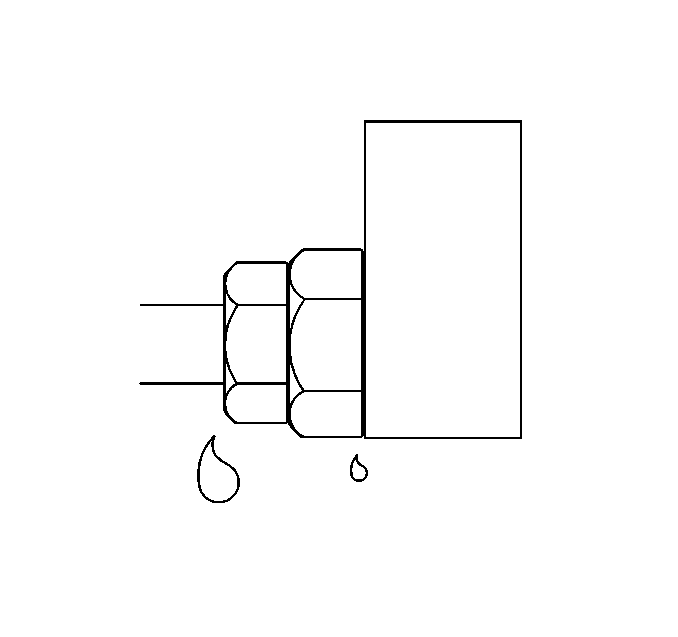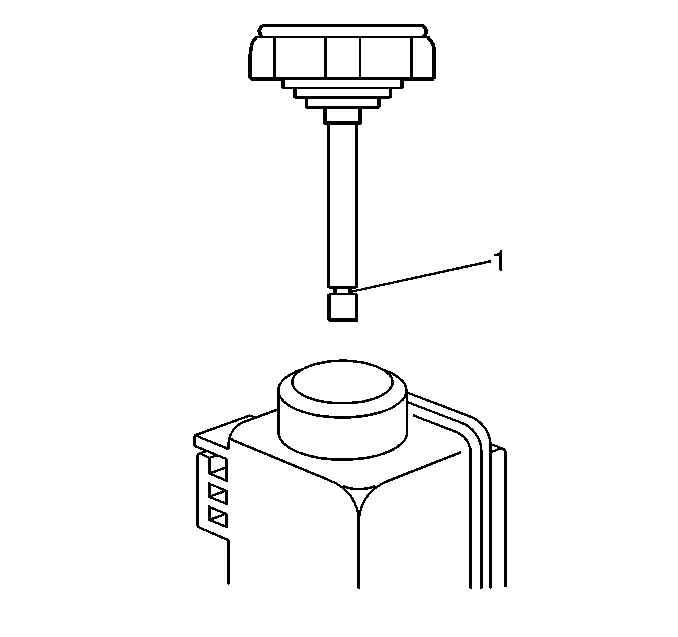Reasons For Bleeding
Bleeding the power steering system prevents the following situations:
| • | Improper power steering system operation |
| • | Power steering pump damage |
| • | Power steering system noise |
When To Bleed
Bleed the power steering system in the following situations:
| • | When replacing any power steering system component. |
| • | When disconnecting the power steering fluid line. |
| • | When power steering system noise exists. |
Inspections Before Bleeding
Inspect the following parts before bleeding the power steering system:
- The power steering hoses must not contact any other part of the
vehicle. Power steering system noise could be caused by the power steering
hoses touching the frame or the engine.

- The power steering hoses for tight connections. Loose connections could
cause fluid leaks or allow air to enter the power steering system.
- The accessory drive belt tightness.
- Check power steering pulley for looseness or damage. The pulley
must not wobble while the engine runs.
Bleeding Procedure

Important: Do not remove the key from the ignition after turning the ignition OFF.
If the key is removed from the ignition the electronic column lock will engage.
- Turn OFF the ignition.
- Raise the front wheels off the ground.
- Turn the steering wheel completely to the left.
- Fill the fluid reservoir to the Full Cold level (1).
Leave the reservoir cap off.
- Turn the steering wheel from lock to lock at least 20 times.
- Have an assistant check the following conditions while turning
the steering wheel:
| • | The power steering fluid level |
| • | The power steering fluid for bubbles |
- Turn the steering wheel from lock to lock at least 40 times if
the power steering system has either of the following components:
| • | A long power steering return line |
| • | A power steering fluid cooler |
- Check the fluid constantly while turning the wheel.
- Trapped air may cause the power steering fluid to overflow. Thoroughly
clean up any spilled fluid.
- Maintain the fluid level at the Full Cold mark (1).
- The fluid must be free of bubbles.
If bubbles exist, check the connections again and repair as necessary.
Repeat steps 5, 6 and 7 for turning the steering wheel while checking the
power steering fluid.
- Start the engine.
- Maintain the power steering fluid level while the engine idles.
- Reinstall the cap.
- Return the wheels to the center.
- Lower the front wheels to the ground.
- Keep the engine running for two minutes.
- Turn the steering wheel in both directions.
- If all the following conditions exist, the procedure is complete:
- If any of the following conditions do not exist, proceed to Special
Conditions For Bleeding:
| • | The system has smooth power assist |
| • | The system has noiseless operation |
| • | The power steering fluid is filled to the proper level |
| • | There are no system leaks |
| • | The power steering fluid is not discolored and is free of bubbles
and foam |
Special Conditions For Bleeding
If the power steering fluid is discolored or there is foam or bubbles,
proceed with the following instructions:
Discolored, Foam or Bubbles in the Power Steering Fluid
- Turn OFF the ignition.
Wait two minutes.
- Recheck the hose connections.
- Start the engine.
- Maintain the power steering fluid level with the engine idling
(1).
- Install the cap.
- Return the wheels to center.
- Lower the front wheels to the ground.
- Keep the engine running for two minutes.
- Turn the steering wheel in both directions.
- If the condition continues, check and repair or replace the following:
| • | The return hose clamps and O-rings |
| • | The pressure hose O-rings |
| • | The steering gear cylinder line O-rings |
- Fill the power steering system.
- Repeat the bleeding procedure.
Noise In Power Steering System
If the power steering pump emits a whine or a groan, proceed through
the following instructions:
- Start the engine.
- Recheck the hoses for contact with the following areas:
- If no contact is found, follow the following method for cool down.
Normal Cool Down
- Turn OFF the engine.
- Wait for the power steering system to cool.
- Install the reservoir cap.
- Start the engine.
- Allow the engine to reach to operating temperature.
- If the noise persists, repair or replace the power steering pump.
- Repeat the bleeding procedure.
Partial Fluid Replacement
- Start the engine.
- Allow the engine to reach to operating temperature.
- If the noise persists, repair or replace the power steering pump.
- Repeat the bleeding procedure.


